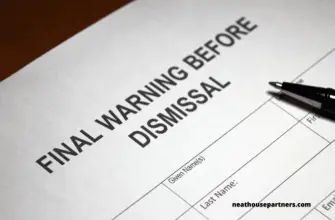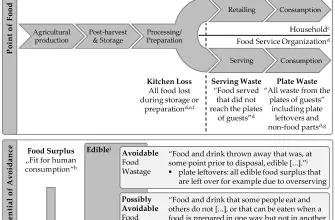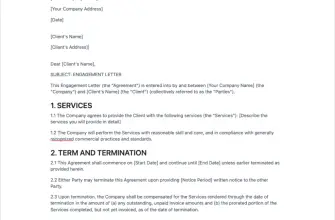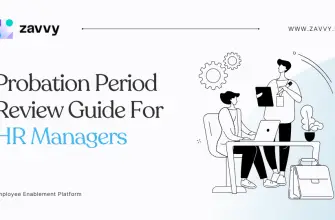“Stay compliant and penalty-free with our comprehensive guide to right to work checks.”
This guide provides comprehensive information for employers on right to work checks, including the legal requirements, types of documents that can be accepted, and penalties for non-compliance. By following these guidelines, employers can ensure they are compliant with the law and avoid costly penalties.
What is a Right to Work Check in the UK?
As an employer in the UK, it is your responsibility to ensure that your employees have the legal right to work in the country. This is where Right to Work checks come in. A Right to Work check is a process that employers must undertake to verify that their employees have the legal right to work in the UK. This is a legal requirement, and failure to comply can result in severe penalties.
The purpose of a Right to Work check is to prevent illegal working in the UK. Illegal working refers to any work carried out by an individual who does not have the legal right to work in the country. This includes individuals who have overstayed their visa, those who have entered the country illegally, and those who have been refused asylum.
To carry out a Right to Work check, employers must obtain and check certain documents from their employees. These documents must prove that the employee has the legal right to work in the UK. The documents that are acceptable for a Right to Work check include a passport, a biometric residence permit, a national identity card, or a birth certificate.
It is important to note that employers must carry out a Right to Work check for every employee, regardless of their nationality or ethnicity. This is to ensure that all employees have the legal right to work in the UK and to prevent discrimination.
Employers must also carry out a Right to Work check before an employee starts work. This means that the check must be carried out before the employee’s first day of work. If an employer fails to carry out a Right to Work check before an employee starts work, they may be liable for a civil penalty.
In addition to carrying out a Right to Work check before an employee starts work, employers must also carry out follow-up checks. Follow-up checks must be carried out for employees who have time-limited permission to work in the UK. This includes employees who have a visa that is due to expire.
Follow-up checks must be carried out at least once every 12 months or before the employee’s permission to work in the UK expires, whichever is later. If an employer fails to carry out a follow-up check, they may be liable for a civil penalty.
It is important to note that employers must keep records of their Right to Work checks. These records must be kept for the duration of the employee’s employment and for two years after their employment ends. The records must include copies of the documents that were checked and the date that the check was carried out.
In conclusion, a Right to Work check is a legal requirement for employers in the UK. Employers must carry out a Right to Work check before an employee starts work and must carry out follow-up checks for employees who have time-limited permission to work in the UK. Employers must also keep records of their Right to Work checks for the duration of the employee’s employment and for two years after their employment ends. Failure to comply with these requirements can result in severe penalties.
How to Conduct a Right to Work Check: Step-by-Step Guide
As an employer, it is your responsibility to ensure that all of your employees have the legal right to work in the UK. This means conducting a right to work check for every employee before they start working for you. Failure to do so can result in hefty fines and even criminal charges. In this comprehensive guide, we will walk you through the step-by-step process of conducting a right to work check to ensure compliance and avoid penalties.
Step 1: Obtain Original Documents
The first step in conducting a right to work check is to obtain original documents from the employee that prove their right to work in the UK. These documents can include a passport, national identity card, or a biometric residence permit. It is important to note that you must see the original documents, not copies or scans.
Step 2: Check the Documents
Once you have obtained the original documents, you must check them to ensure that they are valid and belong to the employee. Look for any signs of tampering or forgery, such as altered dates or mismatched information. You should also check that the employee’s photograph matches their appearance and that the document has not expired.
Step 3: Make a Copy of the Documents
After you have checked the original documents, you must make a clear copy of them. This copy should be kept securely and retained for at least two years after the employee has left your employment. It is important to note that you must not keep the original documents, as this is a breach of data protection laws.
Step 4: Record the Date of the Check
You must record the date that the right to work check was conducted. This is important as it will help you to keep track of when you need to conduct another check for the employee. You should also record the name of the person who conducted the check and any additional notes or comments.
Step 5: Conduct Follow-Up Checks
If the employee has a time-limited right to work in the UK, such as a visa or work permit, you must conduct follow-up checks to ensure that they still have the legal right to work. You should conduct these checks at least one month before the employee’s right to work expires. If the employee no longer has the legal right to work, you must terminate their employment immediately.
Step 6: Repeat the Process for New Employees
You must conduct a right to work check for every new employee before they start working for you. This includes temporary and agency workers. You should also conduct a check for any existing employees who have not had a check conducted in the last 12 months.
In conclusion, conducting a right to work check is a crucial part of being an employer in the UK. By following this step-by-step guide, you can ensure compliance and avoid penalties. Remember to obtain original documents, check them for validity, make a copy, record the date of the check, conduct follow-up checks, and repeat the process for new employees. By doing so, you can protect your business and your employees.
What are the Consequences of Failing to Conduct a Right to Work Check?
As an employer, it is your responsibility to ensure that all of your employees have the legal right to work in the UK. This means conducting a right to work check for every employee before they start working for you. Failure to do so can result in serious consequences, including hefty fines and even imprisonment.
The consequences of failing to conduct a right to work check can be severe. If you are found to be employing someone who does not have the legal right to work in the UK, you could face a civil penalty of up to £20,000 per illegal worker. This penalty can be imposed for each illegal worker, so the costs can quickly add up.
In addition to the financial penalties, you could also face damage to your reputation. Employing illegal workers can lead to negative publicity and damage to your brand. This can have long-lasting effects on your business, making it difficult to attract new customers and retain existing ones.
Furthermore, if you knowingly employ someone who does not have the legal right to work in the UK, you could face criminal charges. This can result in a prison sentence of up to five years and an unlimited fine. It is important to note that ignorance of the law is not a defence, so it is essential that you take the necessary steps to ensure that all of your employees have the legal right to work in the UK.
To avoid these consequences, it is essential that you conduct a right to work check for every employee before they start working for you. This involves checking their original documents to confirm that they have the legal right to work in the UK. You must also keep a record of the check and the documents that were checked.
It is important to note that you must conduct a right to work check for every employee, regardless of their nationality or whether they are a permanent employee or a temporary worker. You must also conduct a right to work check for any subcontractors or agency workers that you use.
If you are unsure about how to conduct a right to work check, there are resources available to help you. The Home Office provides guidance on how to conduct a right to work check, including a step-by-step guide and a list of acceptable documents. You can also seek advice from a legal professional or an immigration specialist.
In conclusion, failing to conduct a right to work check can have serious consequences for your business. It is essential that you take the necessary steps to ensure that all of your employees have the legal right to work in the UK. Conducting a right to work check for every employee, keeping a record of the check and the documents that were checked, and seeking advice if you are unsure can help you avoid penalties and protect your business.
How to Verify Right to Work Documents in the UK
As an employer in the UK, it is your responsibility to ensure that your employees have the right to work in the country. This means that you must carry out right to work checks on all potential employees before they start working for you. Failure to do so can result in hefty fines and even criminal charges. In this comprehensive guide, we will take you through everything you need to know about right to work checks, including how to verify right to work documents in the UK.
What are Right to Work Checks?
Right to work checks are a legal requirement for all employers in the UK. They are designed to ensure that all employees have the legal right to work in the country. This includes British citizens, EU citizens, and non-EU citizens who have the appropriate visas or work permits.
When Should You Carry Out Right to Work Checks?
You should carry out right to work checks on all potential employees before they start working for you. This includes permanent employees, temporary workers, and contractors. You should also carry out checks on existing employees who have a time-limited right to work in the UK, such as those with a visa or work permit that is due to expire.
How to Verify Right to Work Documents in the UK
To verify right to work documents in the UK, you must follow a specific process. This process involves checking the employee’s original documents and ensuring that they are genuine and belong to the employee. You must also check that the documents allow the employee to work in the UK and that any restrictions on their right to work have not expired.
The documents that you need to check will depend on the employee’s nationality and immigration status. For British citizens, you can simply check their passport or birth certificate. For EU citizens, you can check their passport or national identity card. For non-EU citizens, you will need to check their visa or work permit.
When checking documents, you should look for specific features that indicate that they are genuine. These features may include watermarks, holograms, and security threads. You should also check that the documents have not been tampered with or altered in any way.
If you are unsure about the authenticity of a document, you can use the Home Office’s Employer Checking Service. This service allows you to check an employee’s right to work online by entering their details and the details of their documents.
What Happens if You Employ Someone Illegally?
If you employ someone who does not have the legal right to work in the UK, you could face serious consequences. This includes fines of up to £20,000 per illegal worker, a criminal record, and even imprisonment. You could also face damage to your reputation and loss of business.
To avoid employing someone illegally, it is essential that you carry out right to work checks on all potential employees. You should also keep records of these checks and ensure that they are up to date.
In conclusion, right to work checks are a legal requirement for all employers in the UK. To verify right to work documents, you must follow a specific process and check for specific features that indicate that the documents are genuine. Failure to carry out these checks can result in hefty fines and even criminal charges. By following the guidelines outlined in this comprehensive guide, you can ensure that you are compliant with the law and avoid any penalties.
What is a Check Sharecode and How to Use it for Right to Work Checks

As an employer, it is your responsibility to ensure that all of your employees have the legal right to work in the UK. This means that you must conduct right to work checks on all new hires, as well as any existing employees who require a follow-up check. Failure to do so can result in hefty fines and even criminal charges.
One of the most important tools at your disposal for conducting right to work checks is the Check Sharecode. This unique code is generated by the Home Office and can be used to verify an individual’s right to work status online. In this article, we will explain what a Check Sharecode is, how to obtain one, and how to use it for right to work checks.
What is a Check Sharecode?
A Check Sharecode is a unique code that is generated by the Home Office and can be used to verify an individual’s right to work status online. It is a secure and efficient way for employers to conduct right to work checks, as it eliminates the need for physical documents and reduces the risk of fraud.
How to obtain a Check Sharecode
To obtain a Check Sharecode, you must first request one from the individual you are conducting the right to work check on. They can obtain a code by visiting the Home Office website and entering their personal details, including their name, date of birth, and passport or biometric residence permit number.
Once they have obtained a code, they can share it with you via email or text message. It is important to note that the code is only valid for 30 days, so you must conduct the right to work check within this timeframe.
How to use a Check Sharecode for right to work checks
To use a Check Sharecode for a right to work check, you must first visit the Home Office website and enter the code, along with the individual’s date of birth. The website will then verify the individual’s right to work status and provide you with a result.
If the result is positive, you can proceed with the right to work check and record the details in your records. If the result is negative, you must inform the individual and terminate their employment immediately.
It is important to note that a Check Sharecode can only be used for individuals who have the right to work in the UK. If an individual does not have the right to work, you must follow the correct procedures for reporting illegal working and terminating their employment.
In conclusion, a Check Sharecode is a valuable tool for employers conducting right to work checks. It is a secure and efficient way to verify an individual’s right to work status and can help you avoid costly fines and legal issues. By following the correct procedures for obtaining and using a Check Sharecode, you can ensure that your business remains compliant with UK immigration laws.
How to Conduct a Right to Work Check for Non-UK Nationals
As an employer, it is your responsibility to ensure that all of your employees have the legal right to work in the UK. This means that you must conduct a right to work check for all non-UK nationals before they start working for you. Failure to do so can result in severe penalties, including fines and even imprisonment.
To conduct a right to work check, you must follow a specific process. Firstly, you must obtain the employee’s original documents that prove their right to work in the UK. These documents can include a passport, a biometric residence permit, or a visa. You must check that the documents are genuine, belong to the employee, and allow them to work in the UK.
You must also check that the employee’s permission to work in the UK has not expired. If the employee has a time-limited right to work, you must conduct follow-up checks to ensure that they still have the right to work in the UK when their permission expires.
It is essential to keep a record of the right to work check and any follow-up checks that you conduct. This record should include the date of the check, the documents that you checked, and any notes or comments that you made during the check. You must keep this record for the duration of the employee’s employment and for two years after their employment ends.
If you discover that an employee does not have the legal right to work in the UK, you must take action immediately. You cannot continue to employ them, and you must inform the Home Office of the situation. Failure to do so can result in severe penalties, including fines and even imprisonment.
It is also important to note that you cannot discriminate against an employee based on their nationality or immigration status. You must treat all employees equally and fairly, regardless of their background.
To ensure that you are conducting right to work checks correctly, you can use the Home Office’s online checking service. This service allows you to check an employee’s right to work using their biometric residence permit or their passport. The service will confirm whether the employee has the legal right to work in the UK and provide you with a unique reference number that you can use to prove that you conducted a right to work check.
In conclusion, conducting a right to work check for non-UK nationals is a crucial part of being an employer in the UK. It is your responsibility to ensure that all of your employees have the legal right to work in the UK, and failure to do so can result in severe penalties. By following the correct process, keeping accurate records, and using the Home Office’s online checking service, you can ensure that you are complying with the law and avoiding any potential penalties.
What are the Different Types of Right to Work Documents in the UK?
As an employer in the UK, it is your responsibility to ensure that all of your employees have the right to work in the country. This means that you must conduct right to work checks on all new hires, as well as any existing employees whose permission to work in the UK may have expired.
One of the key components of a right to work check is verifying the employee’s identity and immigration status. To do this, you will need to examine certain documents that prove the employee’s right to work in the UK.
There are several different types of documents that can be used to demonstrate an employee’s right to work in the UK. These include:
1. UK or EEA passport – A valid UK or EEA passport is one of the most straightforward ways to prove an employee’s right to work in the UK. You can simply examine the passport to ensure that it is valid and belongs to the employee.
2. Biometric Residence Permit (BRP) – A BRP is a card that is issued to non-EEA nationals who have been granted permission to work in the UK. You can verify the employee’s right to work by examining the BRP and ensuring that it is valid and belongs to the employee.
3. EEA identity card – EEA nationals can also use an identity card issued by their home country to prove their right to work in the UK. You can verify the employee’s right to work by examining the card and ensuring that it is valid and belongs to the employee.
4. Certificate of application – If an employee has applied for permission to work in the UK but has not yet received a decision, they may be able to provide a certificate of application. This document confirms that the employee has applied for permission to work and is awaiting a decision.
5. Immigration status document – Some employees may have a document that confirms their immigration status in the UK. This could include a visa or a letter from the Home Office. You can verify the employee’s right to work by examining the document and ensuring that it is valid and belongs to the employee.
It is important to note that these documents are not the only ones that can be used to prove an employee’s right to work in the UK. There may be other documents that are specific to certain situations or types of employees. For example, students may be able to provide a letter from their university confirming their right to work.
Regardless of the type of document that an employee provides, it is your responsibility as an employer to ensure that it is valid and belongs to the employee. You should also keep a record of the document and the date on which you conducted the right to work check.
Failing to conduct proper right to work checks can result in significant penalties for employers. These penalties can include fines of up to £20,000 per illegal worker, as well as potential criminal charges. By understanding the different types of right to work documents and conducting thorough checks, you can ensure that your business remains compliant and avoids these penalties.
How to Conduct a Right to Work Check Online
As an employer, it is your responsibility to ensure that all of your employees have the legal right to work in the UK. This means that you must conduct a right to work check for every employee before they start working for you. In this article, we will guide you through the process of conducting a right to work check online.
The first step in conducting a right to work check online is to obtain the employee’s permission to conduct the check. You can do this by asking the employee to provide you with their passport or other acceptable documents that prove their right to work in the UK. Once you have obtained the employee’s permission, you can proceed with the online check.
The online right to work check is conducted through the Home Office’s online checking service. To use this service, you will need to register your company and create an account. Once you have created an account, you can start conducting right to work checks for your employees.
To conduct a right to work check online, you will need to enter the employee’s details into the online checking service. This includes their full name, date of birth, and nationality. You will also need to enter the details of the document that the employee has provided as proof of their right to work in the UK.
The online checking service will then verify the employee’s details against the Home Office’s database. If the employee has the legal right to work in the UK, the online checking service will provide you with a positive verification notice. This notice will confirm that the employee has the legal right to work in the UK and that you have conducted a valid right to work check.
If the online checking service is unable to verify the employee’s details, you will receive a negative verification notice. This means that the employee does not have the legal right to work in the UK and that you cannot employ them. You must inform the employee of this decision and take appropriate action to terminate their employment.
It is important to note that the online checking service is only available for certain types of documents. These include biometric residence permits, passports, and national identity cards. If the employee has provided you with a different type of document, you will need to conduct a manual right to work check.
In conclusion, conducting a right to work check online is a quick and easy way to ensure that your employees have the legal right to work in the UK. By following the steps outlined in this article, you can conduct a valid right to work check and avoid penalties for employing illegal workers. Remember to obtain the employee’s permission, register your company with the online checking service, and enter the employee’s details and document information accurately.
What are the Best Practices for Right to Work Checks in the UK?
As an employer in the UK, it is your responsibility to ensure that your employees have the legal right to work in the country. This means conducting right to work checks on all potential employees before offering them a job. Failure to do so can result in hefty fines and even criminal charges. In this comprehensive guide, we will discuss the best practices for conducting right to work checks and avoiding penalties.
Firstly, it is important to understand what a right to work check entails. This involves verifying that the individual has the legal right to work in the UK by checking their immigration status and documents. This can include a passport, national identity card, or visa. It is important to note that different documents may be required depending on the individual’s immigration status.
One of the best practices for conducting right to work checks is to establish a clear process for all employees involved in the hiring process. This can include HR staff, hiring managers, and recruiters. This process should outline the steps involved in conducting a right to work check and ensure that all necessary documents are collected and verified.
Another important practice is to keep accurate records of all right to work checks. This includes copies of the documents provided by the employee and any notes or comments made during the verification process. These records should be kept for at least two years after the employee has left the company.
It is also important to ensure that all employees are trained on the right to work check process and the consequences of non-compliance. This can include providing training sessions or online resources that outline the steps involved in conducting a right to work check and the penalties for non-compliance.
In addition to these best practices, there are also several tools and resources available to help employers conduct right to work checks. The UK government provides an online tool called the Employer Checking Service, which allows employers to verify an individual’s right to work in the UK. This service can be used in conjunction with other verification methods, such as checking physical documents.
Employers can also seek the assistance of immigration lawyers or consultants to ensure that their right to work check process is compliant with UK law. These professionals can provide guidance on the specific documents required for different immigration statuses and help employers navigate any complex legal issues that may arise.
In conclusion, conducting right to work checks is a crucial responsibility for employers in the UK. By establishing clear processes, keeping accurate records, and providing training to employees, employers can ensure compliance with UK law and avoid penalties. Utilizing tools and resources such as the Employer Checking Service and seeking the assistance of immigration professionals can also help employers navigate any complex legal issues that may arise. By following these best practices, employers can protect their business and ensure that they are hiring individuals who have the legal right to work in the UK.
How to Avoid Penalties for Non-Compliance with Right to Work Checks in the UK
As an employer in the UK, it is your responsibility to ensure that all of your employees have the legal right to work in the country. This means that you must conduct right to work checks on all new hires, as well as any existing employees whose permission to work in the UK is due to expire.
Failing to conduct these checks or hiring someone who does not have the legal right to work in the UK can result in severe penalties, including fines of up to £20,000 per illegal worker and even imprisonment in some cases. Therefore, it is essential that you understand the requirements for right to work checks and take steps to ensure compliance.
The first step in conducting a right to work check is to obtain the necessary documents from the employee. These documents will depend on the individual’s immigration status and may include a passport, visa, or biometric residence permit. You must check that the documents are genuine, belong to the individual presenting them, and that they have permission to work in the UK.
It is important to note that you cannot discriminate against an individual based on their nationality or ethnic background. You must conduct right to work checks on all employees, regardless of their race or ethnicity.
If an employee is unable to provide the necessary documents, you can use the Home Office Employer Checking Service to verify their right to work. This service is free to use and provides a response within two working days.
Once you have obtained and verified the necessary documents, you must make a clear copy of them and retain them for the duration of the individual’s employment and for two years after their employment ends. You must also keep a record of the date on which the check was conducted.
It is important to conduct right to work checks on all new hires before they start work. If you discover that an individual does not have the legal right to work in the UK, you must not employ them. If you have already employed someone who does not have the legal right to work in the UK, you must terminate their employment immediately.
It is also important to conduct regular right to work checks on existing employees whose permission to work in the UK is due to expire. You should conduct these checks at least 12 months before the individual’s permission to work expires and retain a record of the check.
If you are found to be employing someone who does not have the legal right to work in the UK, you may be subject to a civil penalty. The amount of the penalty will depend on the circumstances of the case, but can be up to £20,000 per illegal worker.
In addition to civil penalties, employers who knowingly employ illegal workers may also face criminal charges. This can result in fines and even imprisonment for up to five years.
To avoid penalties for non-compliance with right to work checks, it is essential that you understand the requirements and take steps to ensure compliance. This includes conducting right to work checks on all new hires and existing employees whose permission to work in the UK is due to expire, retaining records of these checks, and terminating the employment of anyone who does not have the legal right to work in the UK.
By taking these steps, you can ensure that your business remains compliant with UK immigration law and avoid the severe penalties that can result from non-compliance.
Q&A
1. What is a right to work check?
A right to work check is a process that employers must undertake to ensure that their employees have the legal right to work in the UK.
2. Who needs to undergo a right to work check?
All employees, including permanent, temporary, and agency workers, must undergo a right to work check.
3. What documents are acceptable for a right to work check?
Acceptable documents include a passport, biometric residence permit, or a combination of other documents such as a birth certificate and national insurance card.
4. When should a right to work check be carried out?
A right to work check should be carried out before an employee starts work.
5. What happens if an employer fails to carry out a right to work check?
Employers who fail to carry out a right to work check can face civil penalties of up to £20,000 per illegal worker.
6. Can an employer delegate the right to work check to a third party?
Yes, an employer can delegate the right to work check to a third party, but they remain responsible for ensuring that the check is carried out correctly.
7. What should an employer do if an employee’s right to work status changes?
Employers should carry out a follow-up right to work check if an employee’s right to work status changes during their employment.
8. Can an employer discriminate against an employee based on their right to work status?
No, an employer cannot discriminate against an employee based on their right to work status.
9. What should an employer do if they suspect an employee does not have the right to work in the UK?
Employers should carry out a right to work check and report any suspicions to the Home Office.
10. How long should an employer keep records of right to work checks?
Employers should keep records of right to work checks for the duration of the employee’s employment and for two years after their employment ends.








